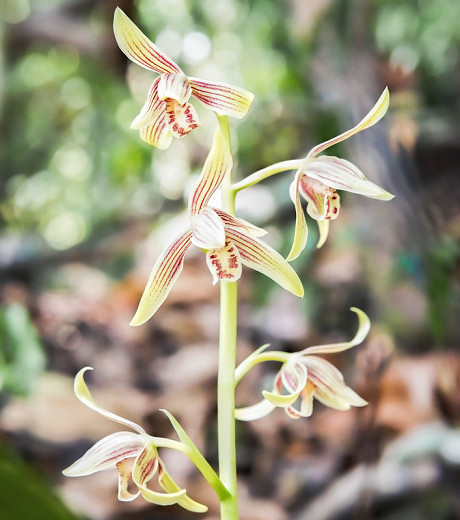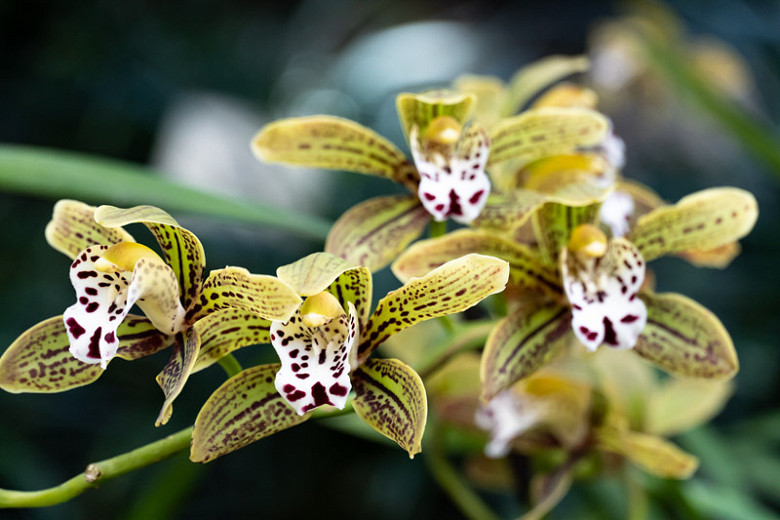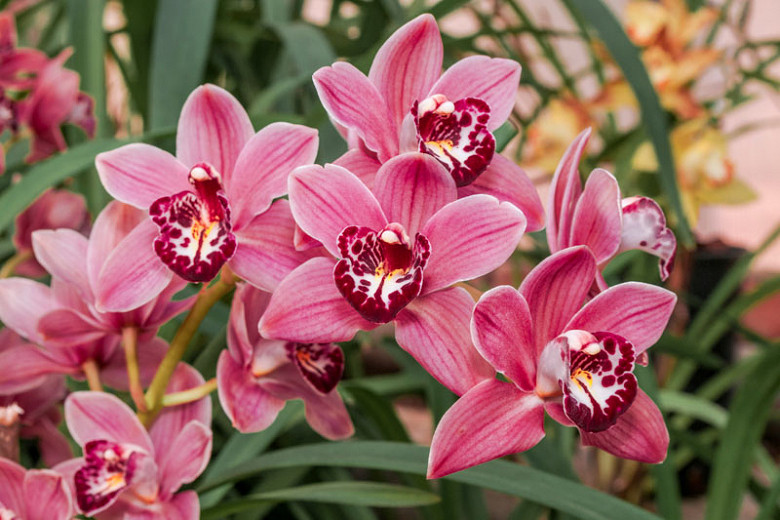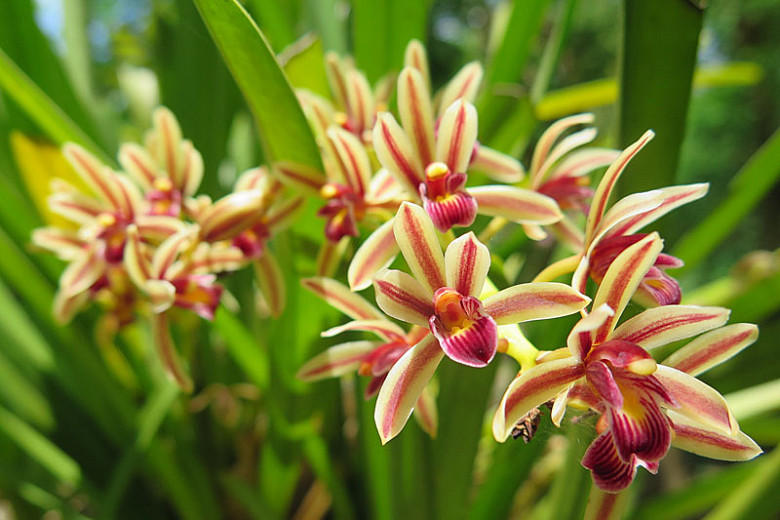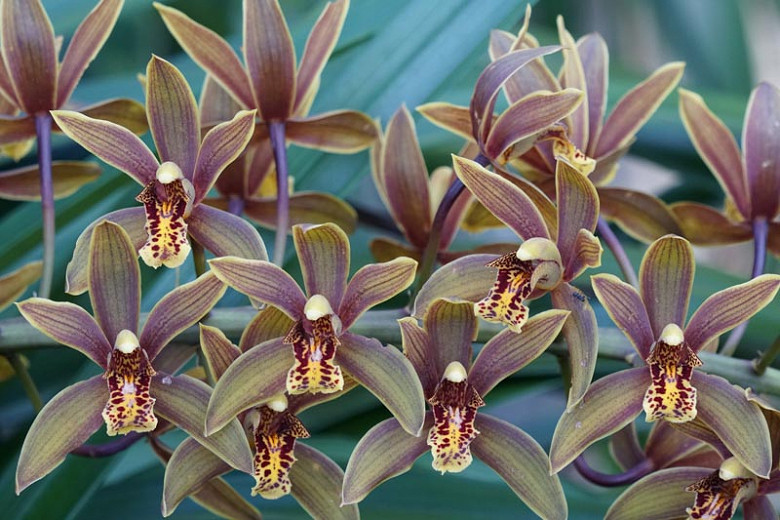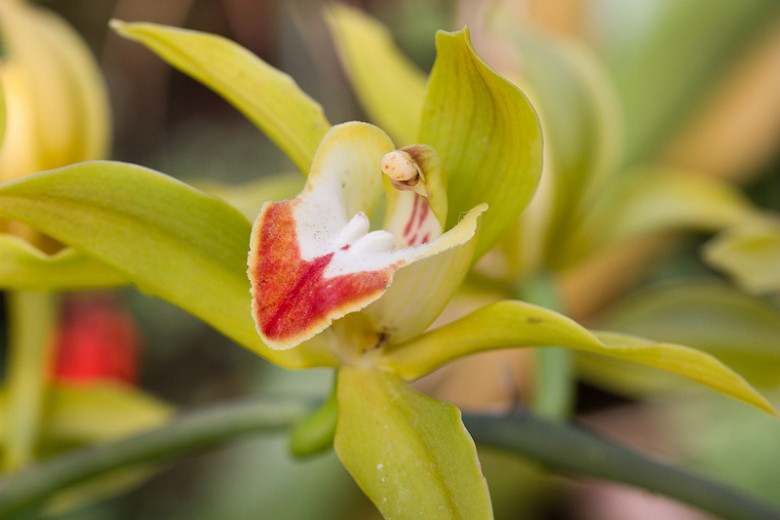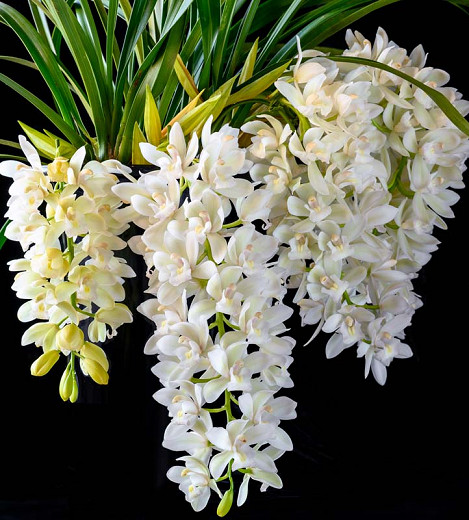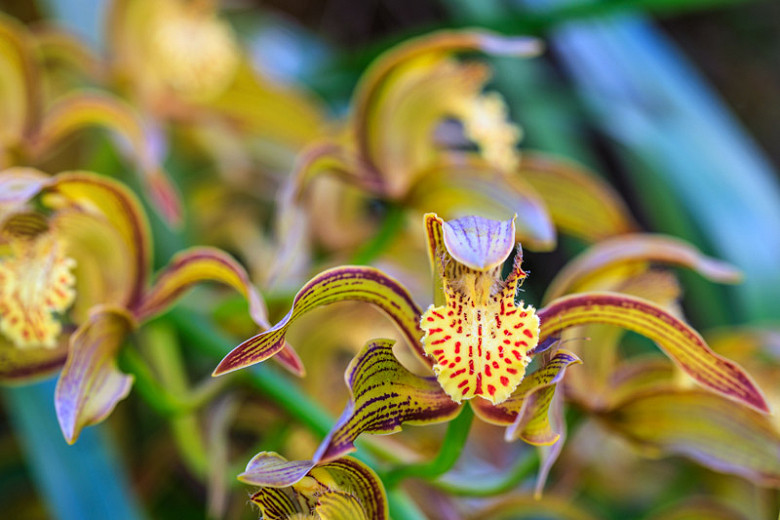Cymbidium ensifolium (Sword-Leaf Cymbidium)
Cymbidium ensifolium (Sword-Leaf Cymbidium) is a terrestrial orchid species boasting upright spikes studded with 3 to 9 well-spaced, intensely, and pleasantly fragrant flowers. Blooming in midsummer to early fall, the blossoms, 3 in. across (6.5 cm), feature yellow or green sepals and petals veined with red or brown lines, and green, pale yellow or white lips adorned with red streaks. The plant forms dense tufts with ovoid pseudobulbs carrying 3-5 linear, pale green leaves with pointed apex, about 8-20 in. long (20-50 cm). The leaves are used in traditional Chinese medicine for various pathologies. Native to Sri Lanka, Southern India to the Philippines, Cymbidium ensifolium has been cultivated in China and Japan for over 2,000 years due to its elegant foliage and the delicacy and fragrance of its flowers lasting 2-3 weeks. Handsome in or out of bloom, it is found in evergreen broad-leafed plateau forests in soils dampened by mists and splash along steep watercourses or on mossy limestone rocks as a lithophyte at elevations of sea level to 4900 ft. (1500 m) as a medium-sized, hot to cool growing terrestrial species.
- Grows up to 8-16 in. tall (20-40 cm).
- Can be grown in the open air, preferably on sandy soils rich in humus (in tropical, subtropical, and temperate climate zones). Can be cultivated in deep pots with good drainage utilizing compost based on bark fragments with coarse peat, perlite, and charcoal. Grows in a semi-shaded position in summer, up to full light in winter.
- Maintain adequate humidity (50-60%) and provide good ventilation.
- Water regularly and abundantly during the growing season. Slightly reduce watering after blooming and until growth restarts.
- Feed during the growing season with hydrosoluble balanced products at half the dosage suggested by the producer.
- Frequent repottings and divisions are to be avoided as the roots do not like to be disturbed. Propagate by division, keeping 3-4 pseudobulbs per division.
- Generally disease free. Keep an eye out for aphids, glasshouse red spider mites, and mealybugs.
- Native to Japan, China, Vietnam, Cambodia, Laos, Hong Kong to Sumatra, and Java.
Tips for reblooming
- Make sure that your Cymbidium is receiving at least 12 hours of filtered sunlight or UV rays daily, especially during spring, summer, and fall months. If the leaves are bright green or too dark, your plant is not getting enough light for blooming. Leaves should be medium to golden green in color, not dark green.
- Moderate and regular watering and adequate fertilization are important in triggering your cymbidium orchids to bloom.
- Cymbidiums need a day-night temperature difference of at least 25°F (15°C) to bloom well. If you are growing your cymbidium outside, make sure you regularly remove all fallen leaves and debris that accumulate on the orchid and in the pot. This will avoid them to decompose and cover your emerging flower spikes and rot them out.
Requirements
| Hardiness | 10 – 12 |
|---|---|
| Plant Type | Orchids |
| Plant Family | Cymbidium – Boat Orchids |
| Exposure | Partial Sun |
| Season of Interest | Summer (Mid,Late)Fall |
| Height | 8" – 2' (20cm – 60cm) |
| Water Needs | Average |
| Maintenance | Average |
| Soil Type | Loam, Sand |
| Soil Drainage | Well-Drained |
| Characteristics | Cut Flowers, Fragrant, Showy, Evergreen |
| Garden Uses | Beds and Borders, Patio and Containers |
